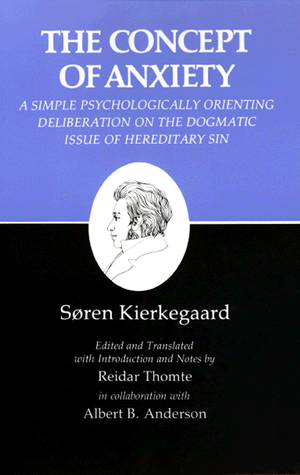Kierkegaard on Anxiety & Creativity
by Maria Popova
“Because it is possible to create — creating one’s self, willing to be one’s self… — one has anxiety. One would have no anxiety if there were no possibility whatever.”
 “Anxiety is love’s greatest killer,” Anaïs Nin famously wrote. But what, exactly, is anxiety, that pervasive affliction the nature of which remains as drowning yet as elusive as the substance of a shadow? In his 1844 treatise The Concept of Anxiety (public library), Danish philosopher Søren Kierkegaard (1813–1855) explains anxiety as the dizzying effect of freedom, of paralyzing possibility, of the boundlessness of one’s own existence — a kind existential paradox of choice. He writes:
“Anxiety is love’s greatest killer,” Anaïs Nin famously wrote. But what, exactly, is anxiety, that pervasive affliction the nature of which remains as drowning yet as elusive as the substance of a shadow? In his 1844 treatise The Concept of Anxiety (public library), Danish philosopher Søren Kierkegaard (1813–1855) explains anxiety as the dizzying effect of freedom, of paralyzing possibility, of the boundlessness of one’s own existence — a kind existential paradox of choice. He writes:Anxiety is a qualification of dreaming spirit, and as such it has its place in psychology. Awake, the difference between myself and my other is posited; sleeping, it is suspended; dreaming, it is an intimated nothing. The actuality of the spirit constantly shows itself as a form that tempts its possibility but disappears as soon as it seeks to grasp for it, and it is a nothing that can only bring anxiety. More it cannot do as long as it merely shows itself. [Anxiety] is altogether different from fear and similar concepts that refer to something definite, whereas anxiety is freedom’s actuality as the possibility of possibility./.../
No comments:
Post a Comment